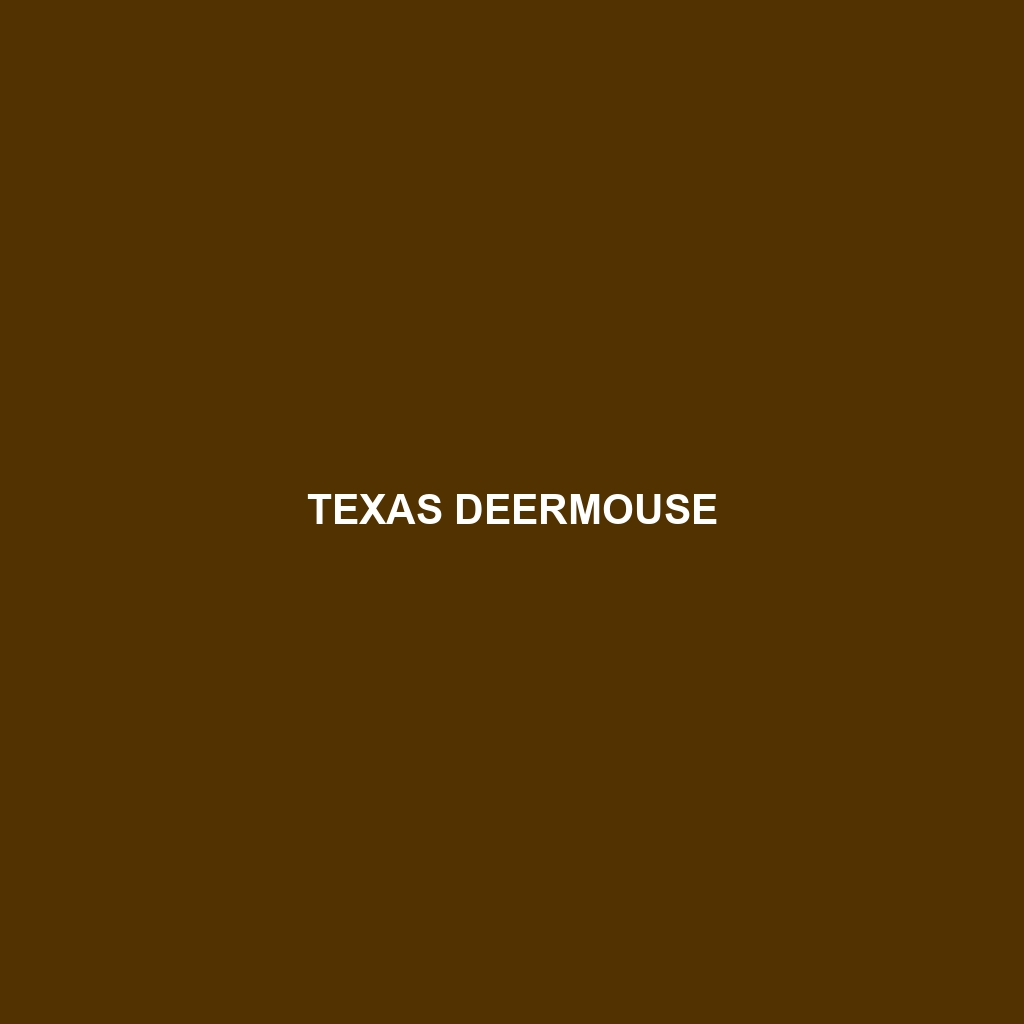Texas Deermouse (Scientific Name: Peromyscus attwateri)
Habitat: The Texas Deermouse is primarily found in the temperate regions of Texas, particularly in the southern Great Plains. This species thrives in grassy areas, woodlands, and brushy habitats that provide ample cover and nesting opportunities. They are commonly located near water sources, such as rivers and streams, which are essential for their survival.
Physical Characteristics: The Texas Deermouse is a small rodent, typically measuring between 7 to 10 inches in length, including its tail. Its fur is soft and can vary in color from light gray to brown, often with a white underbelly. A distinctive feature of the Texas Deermouse is its large, rounded ears and prominent eyes, which aid in nocturnal vision, making it well-adapted for nighttime activity.
Behavior: Texas Deermice are primarily nocturnal, exhibiting increased activity during the night when they forage for food. They are known for their agility and climbing ability, often nesting in trees or low shrubs. They can be solitary or social, forming small groups depending on the availability of resources. Communication among individuals often involves a range of vocalizations and scent markings.
Diet: The diet of the Texas Deermouse consists primarily of seeds, nuts, fruits, and insects. These rodents have been observed foraging in the understory for fallen seeds and berries, making them an integral part of the seed dispersal process in their habitat. Their feeding habits play a crucial role in shaping the vegetation dynamics of their ecosystem.
Reproduction: Texas Deermice have a breeding season that generally occurs in the spring and summer months, triggered by the availability of food resources. Females can produce multiple litters per year, with typically 3 to 6 offspring per litter. The young are born blind and hairless, making maternal care crucial during the early weeks of development. After weaning, juvenile mice begin to explore their surroundings and may survive independently within a few weeks.
Conservation Status: Currently, the Texas Deermouse is classified as “Least Concern” by the IUCN. However, habitat loss and fragmentation continue to pose threats to its populations. Maintaining adequate habitat and minimizing human impact are essential for ensuring the sustainability of this species.
Interesting Facts: Texas Deermice have a remarkable ability to adapt to changing environments. They are known to store food in their nests, demonstrating intelligent feeding behavior that helps them survive periods of scarcity. Additionally, they are capable of jumping distances up to 2 feet, which aids in escaping predators.
Role in Ecosystem: The Texas Deermouse plays a vital role in its ecosystem as both a prey and a seed disperser. It serves as a food source for various predators, including owls, hawks, and snakes. Furthermore, through its foraging habits, it aids in the germination and distribution of plant seeds, contributing to the health and sustainability of its habitat.
